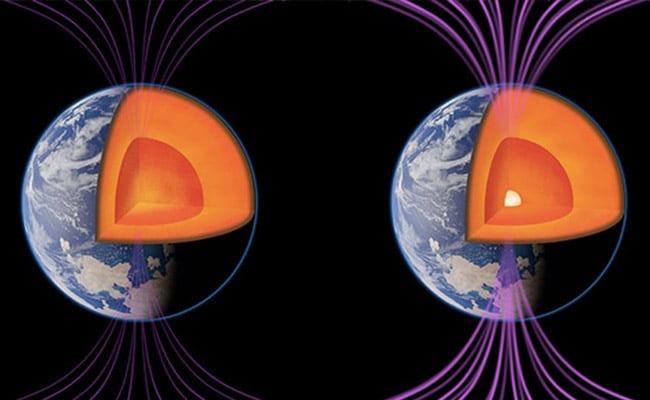

High water content in the transition zone has far-reaching consequences (representative image)
Scientists have discovered a water reservoir three times the size of all the oceans beneath the Earth’s surface, according to an international study. Water is found between the transition zone of the Earth’s upper and lower mantle. The research team analyzed the rate of diamond formation 660 meters below the surface of the Earth using techniques including Raman spectroscopy and FTIR spectrometry, ANI reported.
The study confirmed something that had long been a theory, which is that ocean water accompanies the merging plates and thus enters the transition zone. This means that the water cycle on our planet includes the interior of the Earth.
“These mineral shifts greatly impede the movement of rocks in the mantle,” explains Professor Frank Brinker of the Institute of Earth Sciences at Goethe University in Frankfurt. For example, mantle plumes – rising plumes of hot rock from the deep mantle – sometimes stop right below the transition zone. The movement of the mass in the opposite direction also stops.
“Connecting plates often have difficulty penetrating the entire transition zone,” Brinker says. “So there is a whole cemetery of these plates in this sub-European region.”
However, it was not yet known what the long-term effects of the “sucking” of materials in the transition zone will have on its geochemical composition and whether greater amounts of water are present there. Brinker explains: “The subducting plates also carry deep-sea sediments on their backs in the subsurface. These sediments can contain large amounts of water and carbon dioxide. But until now it is not clear how much enters the transition zone in the more stable form, hydrated minerals and carbonates – Thus it was also not clear whether large amounts of water were actually stored there.”
Certainly, the prevailing conditions will be favorable for that. The dense minerals wadsleyite and ringwoodite (as opposed to olivine at lower depths) can store large amounts of water—in fact so large that the transition zone is theoretically capable of absorbing six times as much water in our oceans. “We learned that the boundary layer has a tremendous capacity to store water,” Brinker says. “However, we didn’t know if she actually did.”
An international study involving a geologist in Frankfurt has now provided the answer. The research team analyzed a diamond from Botswana, Africa. It was formed at a depth of 660 km, directly at the interface between the transition zone and the lower mantle, where ringwoodite is the predominant mineral. Diamonds from this region are very rare, even among the rarer diamonds of ultra-deep origin, which account for only 1 percent of diamonds. Analyzes revealed that the stone contains many inclusions of ringwoodite – which show a high water content. Moreover, the research group was able to determine the chemical composition of the stone. They were almost exactly the same as those found in every part of the mantle rock found in basalt anywhere in the world. This showed that the diamond definitely came from an ordinary piece of Earth’s mantle. “In this study, we showed that the transition zone is not a dry sponge, but rather contains large amounts of water,” Brinker says, adding, “This also brings us one step closer to Jules Verne’s idea of an ocean within Earth.” The difference is that there is no ocean. There are, but there are watery rocks which, according to Brinker, will feel neither wet nor drip.

“Travel specialist. Typical social media scholar. Friend of animals everywhere. Freelance zombie ninja. Twitter buff.”





More Stories
Taiwan is preparing to face strong Typhoon Kung-ri
Israel orders residents of Baalbek, eastern Lebanon, to evacuate
Zelensky: North Korean forces are pushing the war with Russia “beyond the borders”